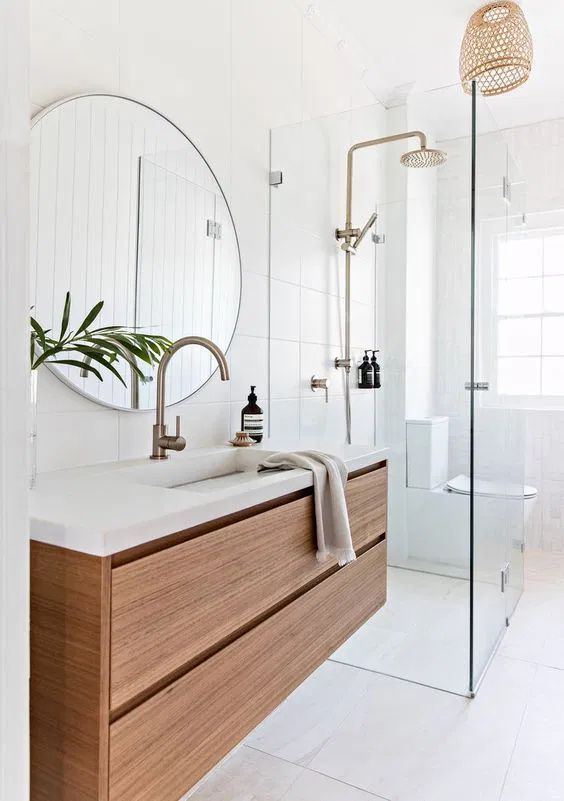A affordable bathroom renovation auckland can be a significant investment, with costs often surpassing national averages due to higher labor rates and material prices. However, achieving a beautiful and functional bathroom doesn’t have to mean breaking the bank. By adopting a strategic approach, focusing on smart choices, and being mindful of potential pitfalls, Auckland homeowners can successfully upgrade their bathrooms without overspending.
1. Define Your Scope and Prioritize ruthlessly
The most crucial step in controlling costs is to clearly define what you want to achieve and to be realistic about your budget from the outset.
- Understand Cost Tiers: In Auckland, a minor cosmetic refresh might cost NZD $8,000 – $15,000, while a mid-range renovation can be NZD $20,000 – $35,000. A full luxury overhaul can easily exceed NZD $35,000. Knowing which tier your aspirations fall into will guide your decisions.
- Needs vs. Wants: Create a detailed list of what your bathroom needs (e.g., fixing a leaky shower, replacing a broken toilet) versus what you want (e.g., a rainfall showerhead, underfloor heating). Prioritize the “needs” to ensure functionality and address critical issues first.
- Keep the Layout Intact: This is the single most effective way to save money. Moving existing plumbing (toilet, sink, shower) is highly labor-intensive and expensive, often requiring significant demolition, rerouting of pipes, and additional permits. Sticking to the current layout drastically reduces costs.
2. Smart Material Selection and Sourcing
Material choices are a major cost driver. Opt for value without sacrificing durability.
- Affordable Flooring: Instead of expensive natural stone, consider high-quality porcelain or ceramic tiles, which are durable, water-resistant, and come in a vast array of styles mimicking more costly materials. Luxury vinyl tile (LVT) is another excellent, budget-friendly option that can replicate wood or stone.
- Cost-Effective Countertops: For vanities, pre-fabricated vanity tops with integrated sinks are much more economical than custom-cut stone slabs. Laminate countertops have also come a long way in aesthetics and durability.
- Refinish, Don’t Replace: If your bathtub or vanity is in good structural condition but looks dated, consider refinishing or painting them. This can provide a fresh look for a fraction of the cost of replacement.
- Shop Local Sales and Clearance: Keep an eye out for sales at local Auckland plumbing suppliers, tile shops, and home improvement stores like Bunnings or Mitre 10. Clearance sections can yield great finds.
- Standard Fixtures: While designer faucets and showerheads are tempting, standard, good-quality fixtures from reputable brands are significantly more affordable and just as functional.
3. Strategic DIY Contributions
If you’re handy, taking on certain tasks yourself can lead to substantial savings on labor costs.
- Painting: A fresh coat of paint is one of the most impactful and cheapest ways to update a bathroom. Ensure you use paint specifically designed for high-moisture environments.
- Demolition (Cautiously): If you’re comfortable and know where utility lines are, carefully demolishing old fixtures or tiles can save on initial labor. Always prioritize safety and ensure proper waste disposal.
- Hardware and Accessories: Swapping out cabinet knobs, towel rails, toilet roll holders, and even light fixtures (if no electrical rewiring is involved) are relatively easy DIY tasks.
- Minor Tiling/Grout Work: For small areas or refreshing existing tiles, re-grouting or using a grout pen can make a big difference. Laying simple, large-format tiles can also be a manageable DIY.
- Know Your Limits: For any complex plumbing, electrical, or structural work, always hire licensed professionals. Attempting these yourself can lead to costly mistakes, safety hazards, and issues with compliance.
4. Smart Contractor Engagement and Project Management
Even if you’re doing some DIY, a good contractor is invaluable for larger projects.
- Get Multiple Quotes: Obtain at least three detailed quotes from licensed and reputable Auckland renovators. Ensure each quote specifies the exact scope of work and materials for an accurate comparison.
- Transparent Contracts: Insist on a clear, written contract that outlines all work, materials, timelines, and payment schedules. This helps prevent misunderstandings and hidden costs.
- Avoid Scope Creep: Resist the temptation to make significant changes once the project has started. Each “change order” adds to the cost and can cause delays.
- Communicate Clearly: Maintain open and frequent communication with your contractor. Address any concerns or questions promptly to prevent issues from escalating.
5. Budget for the Unexpected
Even with meticulous planning, unforeseen issues can arise, especially in older homes.
- Contingency Fund: Always allocate a contingency fund of 10% to 20% of your total estimated budget. This buffer will cover unexpected problems like hidden water damage, mold, or outdated wiring discovered during demolition.
By following these strategies, Auckland homeowners can navigate the complexities of bathroom renovation, achieve a stunning updated space, and stay firmly within their financial plan.

